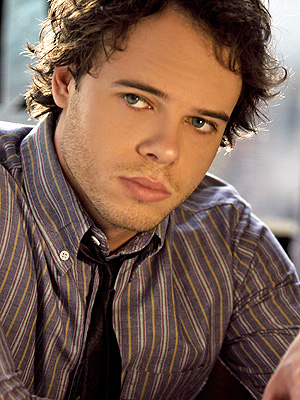
The year 2007 was a pretty good one for rediscovering long-forgotten images in Mexico. Most people already know about Robert Capa’s Mexican suitcase, a trove of his work from the Spanish Civil War. But that same year an unknown archive of vintage prints by Mexico’s greatest photographers was also discovered, left behind in the longtime home of Lola Álvarez Bravo.
The find, known as the Gonzalez-Rendon archive, had prints and original photomontages by Lola, as well as some beautifully printed images by Manuel Álvarez Bravo, to whom she had been married for several years. The find also included work by some of Lola’s students who had gone on to become noted photographers, Mariana Yampolsky and Raul Conde, among them.
Though overshadowed by her more famous partner, who had resisted her foray into photography, Lola ranks among Mexico’s most celebrated photographers, having done portraits of fellow artists and intellectuals as well as work among the indigenous and poor, whom she portrayed with a sense of compassion and social criticism. Her images provide a window in what she — a working photographer and teacher most of her life — valued as an artistic statement.
“It’s what an art historian dreams about, finding the missing pieces,” said James Oles, a lecturer at Wellesley College who was among the first to inspect the images in Mexico. “The material fleshes out some aspects of her work, giving us original titles and dates that radically change the meaning and interpretation of a work of art. And the original photomontages give an idea how she created them.”
Adriana Zavala, an associate professor of Latin American Art at Tufts University, was also among those who got an early look at the trove, which she now thinks consisted of things Lola forget she even had. Since then, she and Rachael Arauz, a specialist in modernist photography, have curated three exhibitions drawn from the archive, including a show that will begin in late March at the Center for Creative Photography in Tucson, Ariz., which will combine the more recent finds with previously held vintage work.
“It was like the Antiques Roadshow when we found this stuff, went through it carefully and got an opportunity to understand Lola in an ‘unauthorized’ way,” Ms. Zavala said. “This allows us to talk about the encounter between the two different bodies of material.”
Born Dolores Concepcion Martinez in 1903, she grew up in a wealthy family, although she had to move in with relatives when her father died. She first met Manuel in her youth, marrying him in 1925. As an accountant, he was sent to work in Oaxaca, where the couple began to take pictures, Mr. Oles wrote in the recently-published catalog, “Lola Álvarez Bravo and the Photography of an Era,” which he edited and which also includes essays by Ms. Arauz and Ms. Zavala.
The area’s poverty struck her, and it elicited a compassion in her work that was different from her husband’s more complex images.
“Lola was maybe a little more natural,” Mr. Oles said. “She was interested in more candid and less intrusive images. She was certainly more interested in people than things.”
The couple separated in 1934, divorcing in 1949. Throughout, she kept his name and did not remarry. She supported herself as a photographer working for government agencies, as well as teaching, where she influenced many.
“I think Lola was a remarkable photographer, especially given all the challenges she faced,” said Elizabeth Ferrer, who published “Lola Álvarez Bravo” with Aperture. “There were women artists, though women were not supposed to be working in the street but in the studio. But the kind of photography done at the time involved a greater public interface, and the fact that she did that showed her incredible strength and desire to photograph the world around her.”
Although she found her own path apart from her more famous husband — she was more gregarious, enjoying the company of artists, writers and intellectuals — work and circumstance worked against her. It was not until the 1980s, Mr. Oles said, that her work as an artist came to the fore.
Mr. Oles visited her in the early 1990s, around the time when the Center for Creative Photography at the University of Arizona acquired an archive of her work. Lola was moved by her son to another apartment, and she died in 1993.
Fourteen years later, Mr. Oles got a call from a museum in Mexico City. Relatives of one of Lola’s friends, who had bought her old apartment, had been safeguarding several boxes that had been left behind. One of them had taken the time to preserve and order the prints.
“She didn’t sell anything or have it framed in her apartment, but just organized it,” Mr. Oles said. “When I went there, it was amazing. It showed what had been separated at some time by Lola, and God knows when or why, there were a lot of her own photos. Many were by students of hers as well as a group of extraordinary vintage photos by Manuel Álvarez Bravo.”
Her photos — including some vintage prints that were exhibited in Philadelphia in 1943 — shed new light on her work. In some cases, original titles gave new meaning to old images. One shot of an indigenous woman seated against a wrought-iron fence that had long been titled “By the Fault of Others” turned out to have “Death Penalty” (Slide 6) as its original title.
“That changes how we interpret this photo of this woman who looks trapped by this grille,” Mr. Oles said. “You can go into the archive of any major photographer and find images they never printed and exhibit them after their death without knowing what they mean. Finding this material tells us these are the photos she chose which she thought were the key images that she was interested in during that era.”
While her photomontages are well known, the archive has the originals, which she made by gluing together cut-out images she would later photograph for the final montage.
“In Mexico, photomontage was mainly a strategy of media and advertising, not an artistic project,” Mr. Oles said. “What Lola was trying to do was elevate it to the realm of high art and view it as equivalent to muralism. The multiple perspectives of photomontage and the fragmented images resolved into a whole are what a muralist like Diego Rivera does when he shows multiple perspectives of a factory and resolving them together. Lola understood that.”
Among the greatest finds in the archive are works by her students. Even in death, though, Lola’s own images prove to affect a current generation. Mr. Oles said her photos of prostitutes, titled “Triptych of the Martyrs,” has a powerful element of feminist criticism.
“Their faces are obscured with wound-like shadows,” he said. “There is this undercurrent of social critique. Whenever my students see those pictures, they are moved sometimes to the point of tears. I don’t think any of Manuel Álvarez Bravos’s photos move them to tears.”
The exhibit “Lola Álvarez Bravo and the Photography of an Era” will be on view at the Center for Creative Photography in Tucson from March 30 through June 23.
Follow @dgbxny and @nytimesphoto on Twitter. Lens is also on Facebook.
This post has been revised to reflect the following correction:
Correction: February 27, 2013
An earlier version of this post incorrectly implied that James Oles was the author of "Lola Alvarez Bravo and the Photography of an Era." He edited the catalog, though he also contributed an essay.












